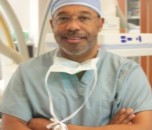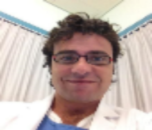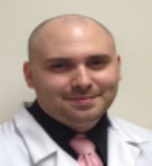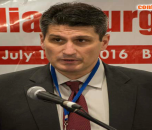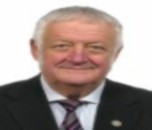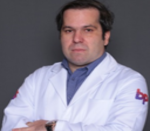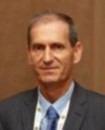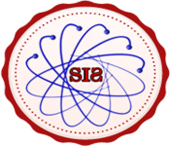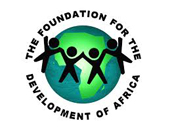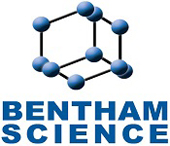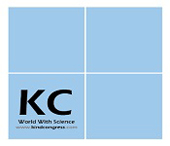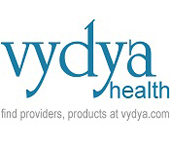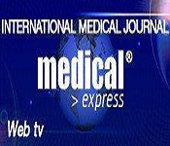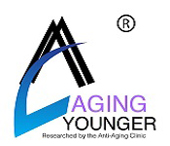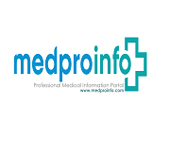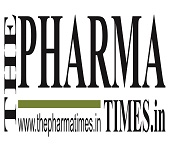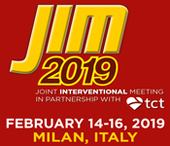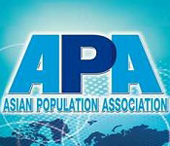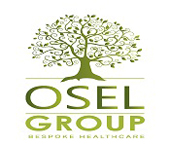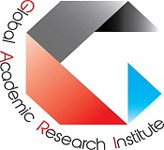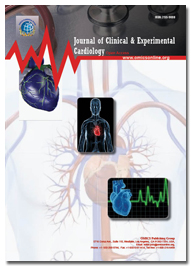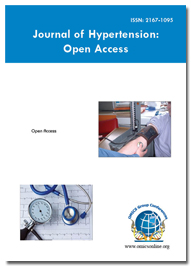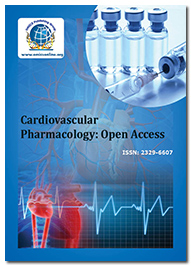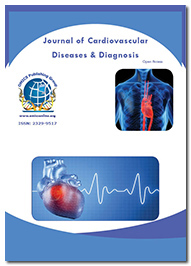Heart 2019
- About Conference
- Scientific Sessions of Heart 2019
- Market Analysis Report of Heart 2019
- New Updates: Heart 2019
HEART 2019
"Middle East Heart Congress " which will be held amid March 18-20, 2019 Dubai, UAE. Heart 2019 gathering aims to unite the most dedicated minds in the business, driving Physicians, Medical Practitioners, Surgeons, Nurses and scholastics everywhere throughout the nations to share thoughts and feature their accomplishments. Offering chance to find out about the unpredictability of the heart maladies, talk about interventional systems, take a glance through new and progressed cardiovascular practices and their proficiency and adequacy in the treatment of different cases, and comprehend neighborhood substances and viable imperatives in enhancing understanding consideration. Notwithstanding giving analysts a place to exhibit their discoveries and information, it will likewise help increment open commitment with science and group.
Occasions identified with cardiology have a wide extension scope throughout the world. These major logical occasions come up completely examined to proffer the best prospect for the academicians regarding joint efforts to embrace the International workshops to introduce their examination, and exchange experts, showing their items and administrations and B2B networking. The logical meetings incorporate oral and publication introductions, courses, and workshops from the experts working in the field of cardiology. We are experienced coordinators of gatherings, displays, and workshops. Our meetings offer world-class content, extraordinary delegate understanding and remarkable systems administration openings in directing cardiology understudies, cardiologists, researchers, inquire about researchers, therapeutic specialists, driving restorative enterprises to champion proficient and social association with sister associations and effectively agree inside the examination and safe use of the solution with respect and morals.
Who attends?
-
Cardiologists
-
Medical Directors
-
Cardiac Surgeons
-
Cardio-thoracic Surgeons
-
Cardiac Nurses
-
Cardiology Associations and Societies
-
Business Professionals
-
Medical colleges and universities
-
Professors
-
Manufacturing Medical Devices and Companies
-
Healthcare Professionals
-
Heart Associations and Societies
-
Integrated Health promoters
-
Fitness Professionals
-
Clinical Research Scientists
-
Cardiology and heart science
-
Societies
-
Medical Students
Track 1: Clinical Cardiology
Cardiology is a branch of medicine that deals with disorders and disease conditions of the heart, which may stretch out through natural defects to acquired heart diseases, typical examples including coronary heart disease (CHD) and congestive heart diseases. The field provides treatment of inherent heart diseases, coronary passage disorder, heart disorders, valvular coronary diseases, and electrophysiology.
Heart plays a vital role as a pump that pushes blood to the organs, tissues, and cells to an individual’s body. Blood conveys oxygen and supplements to every cell and empties the carbon dioxide and waste things secreted by those cells. Blood is returned to the heart blood from all parts of the body. This system of circulation system inside the body through venules and veins.
The Clinical Cardiology access to specific inpatient and outpatient heart care and treatment of heart issues, for example, angina, supply route issues, valvular coronary disease, and heart attack. The person who spends significant time in this field of study is called cardiologists, their essential mission is to convey high caliber, cardiovascular care to most of the patients.
Track 2: Current Research in Cardiology
Advances in pharmaceutical and medicine imply that if Coronary heart disease (CHD) if identified at a beginning period it can be dealt with effectively to increase the survival rate. It’s more likely to achieve effective treatment if the disease is recognized at its early stages.
Recently, many research centers are focusing on the early discovery of CHD keeping in mind the end goal to stop or to reverse the further spread of diseases. The progressing research has incorporated the use of heart scanning for early determination of coronary heart diseases and cardiovascular diseases caused in diabetics condition, development of nuclear Cardiology systems for the locating cause of heart diseases, Drug development, evaluation and assessment of medications utilized in diseased heart condition, determination of novel biological markers to predict the presence of heart disease, Analysis of ethnic and socio-economic differences in heart diseases and risks associated with it.
Track 3: Cardiac and Cardiovascular Research
Cardiac and Cardiovascular Research is related to diagnosis and the problems related to cardiovascular diseases. It creates a platform to share the information with the scientists, researchers esteemed professionals who are involved in surgical and medical cardiovascular treatments. Mainly dealing with heart diseases, cardiovascular medicine, echocardiography, cardiac electrophysiology, Neuro cardiology. Recent Researches included showed how rheumatoid can be related to microvascular endothelial dysfunction, which is thought to be an important cause for increased risk of cardiovascular diseases in patients.
Early determination of cardiovascular events in rheumatoid arthritis is determined by the cause of Microvascular endothelial dysfunction used as a predictive marker. The analytic instrument is utilized for assessment of suspected intense aortic disorders which can help to dodge Misdiagnosis and over testing and other related concerns while assessing and treating patients having an intense aortic disorder.
Track 4: Pediatric Cardiology
Pediatric Cardiology is a branch of cardiology that deals with the heart conditions in babies, youngsters and adolescents. Pediatric Cardiology treatment in Dubai has incredibly developed in a previous couple of years and has helped a huge number of youngsters to have existences today. A pediatric cardiologist analyze, treat, and oversees heart issues in kids, including: "Congenital coronary diseases" children conceived with heart ailments, for example, gaps between the heart chamber, valve issues, and unusual veins; "Arrhythmias", or irregular heart rhythms caused by the electrical framework that controls the heartbeat. Pediatric cardiologists work intimately with essential care pediatricians to give facilitated and thorough care.
Since heart issues can now and then be accompanied by different challenges for youngsters, pediatric cardiologists additionally work in groups with other health services providers. These groups include pediatric heart specialists, cardiovascular anesthesiologists, neonatologists, cardiovascular pediatric intensivists, and pediatric radiologists along with pediatric medical attendants, nutritionists, and physical advisors. They have the ability to accomplish the needs of children’s with heart issues and are especially sensitive to their necessities. Some pediatric cardiologists spend the last 1 to 2 years of their fellowship concentrating on how to analyze and treat heart issues in kids.
Track 5: Diabetes, Obesity, and Stroke
Hazard evaluation must consider the real hazard factors: cigarette smoking, hoisted pulse, abnormal serum lipids and lipoproteins, and hyperglycemia and be inclining hazard factors: abundance body weight and stomach heftiness, physically inactive, and family history of Cardiovascular diseases (CVD). Recognizable proof of hazard factors is a noteworthy initial step for building up an arrangement for the chance diminishment in people with diabetes.
The association between diabetes and coronary illness can be identified with high glucose level in blood. It has regularly been said that diabetes isn't the issue and that it is the high glucose in the blood that is the issue. Without a doubt, it is high glucose levels that lead to more issues as the condition causes devastation to all the essential organs. Veins of various types and sizes get harmed and damaged by high glucose. From the most diminutive vein in the tips of your toes to the biggest veins in your heart, high blood glucose gives the association between coronary illness and diabetes. Being overweight or obese can influence your capacity to deal with your diabetes and increment your hazard for some medical issues, including coronary illness and hypertension.
In case, that you are overweight, a good and healthy dieting arrangement with low calories regularly will bring down your glucose levels and lessen your requirement for prescriptions. Overabundance gut fat around your abdomen, regardless of whether you are not overweight, can raise your odds of developing heart-related diseases. An individual can suffer from overabundance gut/belly fat if his or her measurement around the waist is: more than 40 inches for men; more than 35 inches for women’s.
Track 6: Cardiac- Oncology
Cardio-oncology is another term to describe the efforts to prevent or treat patients with a tumor who are facing heart issues caused by cancer medicines. Although numerous malignancy patients also have conditions associated with Chronic obstructive pulmonary disease (COPD), other infections or Chronic kidney disease (CKD), the descent of heart disease in these patients has led to the development of this new field. Cardio-oncology includes malignancy specialists (oncologists), cardiologists and analysts.
Cardio-oncology is expeditiously developing field aimed at limiting the impacts of cardiovascular diseases and mortality in tumor survivors. To meet this point, patients are evaluated and characterized, their danger of cardiotoxicity are observed and assessed during and after chemotherapy to survey for early signs or indications of heart diseases. Specifically, transthoracic echocardiography in Cardiovascular imaging plays the fundamental role in the standard evaluation and serial follow-up of cardio-oncology patients. The mechanism of cardiotoxicity of common chemotherapeutic related with an expanded hazard for left ventricular systolic in cardio-oncology patients.
Cardio-Oncology is to propel the science and routine with regards to this rising field to discover a harmony between oncologic viability and diminishing antagonistic cardiovascular impacts through convenient distribution and spread of companion looked into inquiring about. As an open access, online diary Cardio-Oncology gives a high permeability stage to the distribution of unique research and master audits on the cardiovascular impacts of tumor treatment. Cardio-oncology is the crossing point of heart conditions in patients who have been dealt with for tumor. Cardiologists can evaluate patients for potential danger of creating heart conditions if patients take certain kinds of malignancy medications or following radiation treatment to the chest. They likewise enable oncologists to ensure their patients amid treatment by nearly viewing the heart and perceiving heart inconvenience ahead of schedule in treatment.
Track 7: Cardiovascular Disease and Nutrition
The major cardiovascular diseases influencing this world is mainly because of atherosclerosis and hypertension, both of which are significantly influenced by consumption of high calories. The complete investigation of supplements and their effect on cardiovascular infection can be vast venture. Numerous dietary hazard factors add to these diseases in different ecological and ethnic setup. These hazard factors are mostly found in youth so preventive measures must be taken in the schedule throughout everyday life. Cardiovascular diseases (CVD) incorporate coronary diseases, stroke, hypertension, and rheumatic coronary diseases.
The most common heart disease is atherosclerotic in vascular system. CVD is the most widely recognized reason for death in the various countries. CVD is the result of atherosclerosis, the dynamic accumulation of plaque (greasy stores) on vessel walls. Bloodstream is stopped in vessels because of narrowing of the blood vessels. If a blood coagulation holds up in a vessel it is due to atherosclerosis, the bloodstream is halted totally, and the tissues downstream will terminate and die. At the point when this happens in a heart vessel, a heart attack chances are very high.
Cardiovascular diseases involve coronary illness, stroke, heart disappointment and different issue that influence the heart and veins. It is firmly identified with other perpetual infections, for example, renal ailment, diabetes, and dementia. Basic pathophysiological forms are irritation and endothelial dysfunction, atherosclerosis, thrombosis, Modifiable natural hazard factors incorporate lifted circulatory strain, atherogenic blood lipid profile and weakened glucose resistance.
Track 8: Heart Disease and Failure
Heart failure, is also known as congestive heart disease, happens when the heart muscle doesn't pump blood. Certain conditions, for example, the limited area in blood vessels in the heart (coronary supply route sickness) or hypertension, will lead to weak heart or heart stiffness, making it impossible to fill and pump effectively. It is not feasible for all conditions that prompt heart diseases to be turned around, yet medicines can enhance the signs and side effects of heart failure and help an individual live more. The way of life changes — for example, working out, overseeing pressure, due to the reduction of sodium in your eating routine and getting more fit — can enhance your health condition.
The best way to prevent the cause of heart diseases is to anticipate and control conditions that cause heart diseases, for example, coronary supply route diseases, hypertension, diabetes or weight.
Heart failure is regularly identified with other infection or sickness. The most widely recognized reason for heart disappointment is coronary artery disease (CAD), there is a lot of trouble caused narrowing of the arteries, which supply blood and oxygen to the heart. Different conditions that may build hazard for treating heart failure include: Heart disappointment is described by the difficulty to draw a sufficient supply of blood to the body. Without adequate bloodstream, all major functions of the body part are disturbed.
Heart disseases is a condition that disables any individuals heart. In a few people with heart disease, the heart experiences issues in drawing enough blood to help different organs in the body. Other individuals may have a hardening of the heart muscle itself, which diminishes bloodstream to the heart.
Track 9: Women and Heart Disease
The truth of the matter is: cardiovascular disease is very prominent in women’s, causing 1 of every 3 deaths every year, around 1 female every passing minute. In addition: These realities just start to touch the most superficial layer. There are a few misguided judgments about coronary heart disease (CHD) in ladies, and they could be putting oneself in danger. The American Heart Association's Go Red for Women development advocates for more research and activity for ladies' heart health for this very reason. In this segment, we'll arm you with the certainties and dissipate a few legends – claiming reality can never again be overlooked.
All women confront the risk of coronary diseases. If, awareness gives mindful of side effects and dangers only related women’s, and in addition eating a heart-sound eating regimen and working out, can protect them from heart disease that influence women’s more than men incorporate: Broken heart disorder - extraordinary emotional pressure prompting serious however regular short-term heart muscle disappointment; Coronary microvascular malady (MVD) - an issue that influences the heart's small conduits
The more aged the women gets, more is the probable for her to get CHD. But women of any age should be worried about coronary disease. All women’s can find a way to avoid it by rehearsing right way of living their life. While a few ladies have no side effects, others encounter angina (dull, overwhelming to sharp inconvenience in chest), undeniable irritation/jaw/throat or torment in the upper belly or back. These may happen in rest or start due to physical action or can be activated by mental stress. In some cases, coronary illness might be quiet and not analysed until the point they encounter signs or side effects of a heart attack, heart disappointment, an arrhythmia or stroke.
Track 10: Heart disease: Diagnosis and Testing
In heart disease diagnosis, a specialist will initially ask to describe side effects and therapeutic history. Physical condition likewise will be evaluated through a standard medicinal exam. Tuning in to the heart for washing or whooshing sounds, also known as heart mumbles or murmurs, may give critical insights about inconvenience in the heart. Heart diseases are suspected, tests are done to discover what is really occurring inside the heart.
An electrocardiogram, or ECG, is typically the primary test to be performed. By recording electrical action inside the heart, the ECG rapidly uncovers any electrical anomalies that might be the cause of inconvenience or may demonstrate that the heart muscle has been or is being harmed by ischemia (absence of oxygen-rich blood).
Additionally, subtle elements can be accumulated by imaging of the heart utilizing X-Ray beams, giving off different outputs collection utilizing CT, MRI or atomic innovation, or through angiography, an extraordinary strategy that takes into consideration complete detailed imaging of veins. Echocardiograms (ultrasound assessments of the heart) can likewise decide how well the heart and valves are working. Different tests may incorporate pressure testing, with or without extra imaging of the heart, and advanced testing for arrhythmias, (for example, electrophysiology testing or EP testing).
Track 11: Cardiac Surgery
Heart surgery or cardiovascular medical surgery is a medical procedure on the heart or great vessels performed via cardiovascular specialists or surgeon. Usually used to treat confusions of ischemic coronary illness for instance, with coronary bypass grafting; to rectify inherent coronary disease; or to treat valvular coronary diseases from different causes, including endocarditis, rheumatic coronary disease,and atherosclerosis. It additionally incorporates heart transplantation. Thoracic surgery also with another name as “cardiothoracic surgery” is associated with the careful treatment of organs inside the thorax (the chest), treatment of the lungs and lungs diseases and also heart (coronary disease).
In many nations, cardiovascular surgery including the heart and the considerable vessels and general thoracic surgery including the lungs, throat, thymus, are separate surgical specialties, the exemptions are the United States, Australia, New Zealand, and some EU nations, for example, the United Kingdom and Portugal. Open-heart surgery might be done to carry out CABG.
A coronary bypass grafting might be essential for individuals with coronary illness. Coronary illness or heart disease happens when the veins that give blood and oxygen to the heart muscle end up hard and narrowed, known as “hardening of the arteries. Stiffening happens when greasy material structures a plaque on the walls of the coronary artery. This plaque limits the arteries diameter for blood flow, making it troublesome in circulation. At the point when blood can't stream legitimately to the heart, this can lead to heart attack.
Track 12: Heart Devices
A Heart device is utilized to keep one’s heart pulsating with a regular cadence. There are a few kinds of devices which are accessible. When an individual has Heart failure with decreased ejection fraction (HF-rEF) they need a heart device, to address related issues. Numerous heart devices are intended to help control irregular heartbeat in individuals with heartbeat issue. These inconsistencies are caused by issues with the heart's electrical system, which flags the heart to contract and draw blood all through the body.
Advance in technology has led to the development of devices like pacemakers, implantable cardioverter defibrillators, or ICDs, and implanted heart rhythm monitors called loop recorders that either help the heart’s electrical system function properly or measure heart rhythm.
Track 13: Heart Regeneration
Heart regeneration has been strongly examined, and seriously disputable, for more than 150 years now. In a quest for this inquiry, the heart has been wounded, cut, closed up, coagulated, solidified, infused with poisons, infected and infarcted, examining species going from marine spineless creatures to horses. The heart is one of the minimum regenerative organs in the body, so if there is a regenerative reaction, it differs little with that seen in numerous other different tissues, similar to liver, skeletal muscle, lung, gut, bladder, bone or skin. For most examiners, the inquiry truly is about whether there is no recovery (naturally hard to demonstrate) or recovery at low rates (hard to identify, however conceivable with delicate methodologies).
Cardiovascular recovery is an expansive exertion that expects to repair irreversibly harmed heart tissue with science and technology, which includes mainly use of free-cell and stem cell therapy. Reparative devices have been designed to reestablish damaged and affected heart tissue and utilizing the body's regular capacity to recover. Researchers are finding regenerative arrangements that can be reestablished, recharge and reuse patients' own reparative limit. Through the vision and liberal help of Russ and Kathy Van Cleve, attempts are in progress to create revelations that will globally affect ischemic coronary diseases.
Track 14: Cardiovascular Pharmacology
Heart and cardiovascular diseases are the main sources of hospitalizations and demise in the United States and other places in the world. Developing new remedial agents for heart diseases has been the prior need for the pharmaceutical business in light of the enormous potential market for these medications. A portion of these fresher medications is every now and then utilized as a part of the act of cardiovascular anesthesiology. This article surveys the ongoing advances in cardiovascular solutions identified with the act of heart anesthesia cardiovascular pharmacology mainly relating the instrument of activity of various classes of medications to their impact on the control of the cardiovascular system. It will cover both highly up to date kinds of medication and late advances in comprehension of more approved medications.
Understanding the component of activity of any new medication enables anesthetists to join new medications into their clinical practice The investigation of essential components and pathways engaged with heart pacemaking and the control of the vasculature will feature new focuses for atomic mediation in heart diseases. In the mix, the age of little atoms will permit the examining of such components and pathways both to improve our comprehension of the fundamental science or pathology, and to feature new conceivable helpful leads and along these lines draw in the consideration of industry.
Some of the important studies carried out in cardiac pharmacology: Development of novel anti-inflammatory drugs for atherosclerosis; Ion channel reconstitution studies; Endothelial-vascular smooth muscle signaling; Inotropic mechanisms; Development of novel anti-ischemic agents; Cellular mechanisms of pacemaking and arrhythmogenesis; Pathway biology of the cardiovascular system; drug-induced cardiotoxicity mechanism.
Track 15: Cardiac Nursing
Heart nursing is a nursing specialist that works with patients who experience the effects of different states of heart conditions and cardiovascular system. Cardiovascular medical attendants help in the treatment conditions, for example, congestive heart failure, unstable angina, myocardial infarction, cardiomyopathy, coronary artery disease and cardiac dysrhythmia under the direction of a cardiologist.
Cardiac nurses or Heart medical attendants perform postoperative care on a careful unit, push test assessments, cardiovascular observing, vascular checking, and health assessments. Cardiovascular medical attendants must have basic life support and advanced cardiac life support confirmation. Likewise, they must have specific abilities including electrocardiogram checking, defibrillation, and drug organization by nonstop intravenous drip. Cardiac nurses work in a wide range of situations, including cardiac surgery wards, cardiovascular intensive care units (CVICU), cardiac catheterization, operating theatres, coronary care units (CCU), intensive care units (ICU), cardiac rehabilitation centers, clinical research, and cardiac medical wards.
Most cardiovascular clinical nurse specialists (CNSs) work in healing facilities. They look after fundamentally sick patients, and in addition, those recouping from cardiovascular strategies, for example, sidestep angioplasty, or pacemaker medical procedure. Cardiovascular medical attendants may likewise enable patients to recoup at home. These medical caretakers work with youngsters and grown-ups of any age, in spite of the fact that coronary illness has large influences on older individuals.
Track 16: Case reports on Cardiology
Case reports offer exceptional value to the assemblage of medicinal information by presenting about new diseases, diagnosis instruments, therapeutic approaches restorative methodologies, and unfavorable or useful impacts of medications. The demonstration of recording, examining with associates and publishing clinical perceptions as case reports stay as basic to the solution and patient care.
These short correspondences produce or implement speculations that may prompt further assessment for bigger examination. By giving the complete description of the side effects, signs, finding, treatment, and follow-up of an individual patient, case reports reflect clinical experience and bolster medicinal advance. The arrangement needs factual inspecting, putting it at the base of the hierarchy of clinical proof. Case reports exclude controls, have constrained example measure (one to a couple of people), and are unblinded, impediments that require a wary way to deal with the understanding of discoveries. Advances in drug imply that if coronary heart disease (CHD) is recognized as a beginning period it can be dealt with effectively to expand the survival rate.
Effective treatment is more probable if the disease is diagnosed at it’s soonest. The current focus is around the early identification of CHD keeping in mind the end goal to stop or reverse the further spread of the disease.
The progressing research incorporates the utilization of heart scanning in the early assessment of coronary illness in diabetics, the development of Nuclear Cardiology for the recognition of coronary illness, Drug improvement and assessment of medicines utilized as a part of CHD, Identification of bio-markers to anticipate the presence of cardiovascular diseases, Analysis of socio-economic and ethnic differences involved with risk associated with heart disease.
Summary of the conference:
Cardiology is a field of medicine manages the issue associated with human heart or any other creature. The field consolidates remedial investigation and treatment of natural heart flaws, coronary vein disease, heart ailment, volvuli coronary sickness and electrophysiology. Coronary illness is a condition that has influence over the blood supply to the heart and furthermore, it also cause problems like blocked and narrowed arteries. The veins are limited or obstructed because of the cholesterol deposition on the walls of blood vessels. Ischemia is a condition in which the bloodstream (and thereby oxygen) is confined or lessened in a particular part of the body. Cardiovascular ischemia is the name for decreased level blood flow and oxygen to the heart muscle. At the point when arteries are extremely narrowed down, there is less blood and oxygen flow to the heart muscle. This can eventually cause Myocardial infarction. Ischemia regularly causes chest torment or inconvenience is known as angina pectoris.
Scope and importance:
World cardiology meeting is a unique social event to join overall recognized scholastics in the field of Cardiology, Cardio Vascular examiners, Health specialists, analysts, educational scientists, industry researchers, scientists to exchange about research and developments in grounds of cardiology. The main aim of this meeting is to invigorate new thoughts for treatment and determine the present market for proceeding towards future of cardiovascular medications, gadgets, and diagnostics, with an accentuation on new technology that will be advantageous in the field of Cardiology.
The significance of coronary heart disease (CHD) hazard elements may vary amongst people and Community and by sex and age. Shockingly CHD is still found to be the main cause of death, which implies that there, must be no eased up in our endeavor’s to wipe out this disease. The importance of hazard factors in people and the group were assessed as relative-and populace inferable dangers. Countries from the Middle East bear a heavy burden from Cardiovascular and coronary heart disease which has become the leading cause of death in the UAE, accounting for over two-thirds of all deaths, including most racial and ethnic gatherings in the Dubai, UAE and also in the United States, including African Americans, Hispanics and Whites.
Greatest achievements in the field of cardiology:
The great success in lowering cardiovascular mortality rates during the last decades of the 20th century are secondary to the extraordinary strides made in the understanding of basic cardiovascular science and in the development of new diagnostic and therapeutic techniques. The 10 most important cardiologic developments and discoveries of the last century are electrocardiography; preventive cardiology and the Framingham Study; “lipid hypotheses” and atherosclerosis; coronary care units; echocardiography; thrombolytic therapy; cardiac catheterization and coronary angiography; open-heart surgery; automatic implantable cardiac defibrillators; and coronary angioplasty.
The immense accomplishment in bringing down cardiovascular death rates during the most recent years of the twentieth century are extraordinarily unprecedented steps made in the comprehension of essential cardiovascular science and in the improvement of new indicative and helpful strategies. The 10 most vital cardiologic improvements and disclosures of the most recent century are electrocardiography; echocardiography; atherosclerosis; "lipid speculations" and preventive cardiology and the Framingham Study; coronary care units; thrombolytic treatment; cardiovascular catheterization and coronary angiography; open-heart medical procedure; programmed implantable cardiovascular defibrillators; and coronary angioplasty.
Why Dubai, UAE:
Cardiovascular sickness or disease (CVD) keeps on being the main reason for the number of death and handicaps on the planet today: more than 17.3 million individuals pass on from cardiovascular ailment consistently.
Any heart disease, brain-related vascular ailment, or infection of the vein constitutes as a CVD. The most pervasive cardiovascular illnesses incorporate coronary disease (e.g. heart assault) and cerebrovascular disease (e.g. stroke). Controlling key hazard factors, for example, eating low carbs, carrying the physical action, reduced tobacco consumption, and circulatory strain may decrease the risk for route cause of CVD.
The solace of Dubai's lavish way of life can include some significant downfalls to your wellbeing and health of individuals. Less than stellar eating routine and an absence of activity mean diabetes and obesity rates are alarmingly high contrasted with worldwide midpoints, while another approaching risk is the coronary illness. In the UAE, 41 percent of under 30s experience the side effects of hypertension (a hazard factor for the heart assault and stroke), contrasted with a worldwide normal of 25-30 percent, and it is foreseen the figure could ascend to as high as 60 percent by 2025.
In 2013, 850 heart-assault patients were admitted to Rashid Hospital in Dubai. An alarming measurement in itself, all the significant calming news was the normal age of the first-run through heart assault patients. Though the worldwide normal is 65 years, the normal age of the Rashid Hospital patients was 45 years. Furthermore, of those 850 patients, "40 percent were diabetic, 40 percent were hypertensive and 25 percent had abnormal amounts of cholesterol."
In UAE, Diabetes is a noteworthy hazard factor for heart assaults, since more than 20 for every penny of UAE's populace is diabetic. Thus, the level of individuals with corpulence, hypertension, and elevated cholesterol is additionally high in UAE.
Tobacco utilization is another noteworthy reason for cardiovascular maladies in UAE; confirmed by the way that over half of the heart assault patients conceded in Rashid Hospital in 2013 were smokers.
The high danger of coronary illness in the district can likewise be ascribed to a terrible eating routine and the high utilization of fat and sugars.
Some of the other factors causing CVD are
-
Being physically inactive
-
Being overweight or obese
-
Family history of heart disease
-
Ethnic background
-
Sex – men are more likely to develop CVD at an earlier age than women.
-
Age – as you grow older, there are more likely chances that you may develop CVD.
Members Associated with Heart Diseases:
-
There are 270 Cardiologists Specialists found in Dubai.
-
There are 15,600 Cardiology Specialists in the United Arab Emirates
-
There are a total of 65,000 cardiologists in the Middle East

Global Market Analysis:
The global cardiovascular therapeutic drug market was worth $140.7 billion in 2009 and is expected to grow by a compound annual growth rate (CAGR) of 2.7% to $144.5 billion in 2010. This market will experience a sizable reduction in the early portion of the forecast period, and then slowly rise to reach $139.8 billion in 2015, a CAGR of -0.7%.

Societies Associated with Cardiology Research:
United Arab Emirates:
-
Emirates Cardiac Society
-
World Society for Pediatric and Congenital Heart Disease
-
Gulf Heart Association
-
Asian Pacific Society of Cardiology
-
Pan Arab Congenital Heart Disease Association
-
CSI Dubai
-
Gulf Heart Rhythm Society
-
Saudi Heart Rhythm Society
-
World Society for Pediatric and Congenital Heart Surgery
World Wide:
-
The American Heart Association
-
International Society for Heart Research (ISHR)
-
Association for European Pediatric Cardiology
-
American Association of Heart Failure Nurses (AAHFN)
-
Heart Valve Society of America (HVSA)
-
Heart Failure Society of America
-
Society of Invasive Cardiovascular Professionals
-
European Society of Cardiology
-
Working Group for Cardiac Magnetic Resonance Spanish Society of Cardiology
Industries Associated with Cardiology Research:
World Wide:
-
Medtronic, Inc.
-
Boston Scientific Corporation
-
St. Jude Medical, Inc.
-
Abbott Laboratories
-
Cordis Corporation
-
BIOTRONIK SE & Co. KG
-
Sorin S. P. A.
-
Edwards Life sciences Corporation
-
Terumo Corporation
-
Biosense Webster, Inc.
-
C. R. Bard, Inc.
-
AGA Medical Holdings, Inc.
-
MAQUET GmbH & Co. KG
-
Sahajanand Medical Technologies Pvt. Ltd.
-
Vascular Concepts Limited
-
GE Healthcare
-
Philips Healthcare
-
Fukuda Denshi Co., Ltd.
-
Cardiac Science Corporation
-
Welch Allyn Inc.
-
ZOLL Medical Corporation
-
Eurocor GmbH
-
B. Braun Melsungen AG
-
OSI Systems, Inc.
-
W. L. Gore & Associates, Inc.
-
Berlin Heart GmbH
-
Heart Failure Society of America
-
Society of Invasive Cardiovascular Professionals
-
European Society of Cardiology
-
Working Group for Cardiac Magnetic Resonance Spanish Society of Cardiology
United Arab Emirates:
-
Microports Medical
-
Sichuan Jinjiang Electronic Science And Technology Co., Ltd
-
Syncardia Systems, Inc.
-
Sophion Bioscience A/S
-
Berlin Heart Gmbh
-
Spectranetics International B.V
-
Esaote S.P.A
-
Biotronik Gmbh & Co
-
Bioteque Corporation
-
Dräger Medical Ag & Co.
-
Fukuda Denshi Co., Ltd
-
Nihon Kohden Corporation
-
All Pro Corporation
Universities Associated with Cardiology Research:
United Arab Emirates:
-
University of Sharjah
-
Public Health Research Center
-
RAK Medical College & Health Sciences University
-
United Arab Emirates University, Al Ain
-
Al Jalila Foundation
-
Heart & Vascular Institute (Cleveland Clinic)
-
Gulf Medical University
-
Murdoch University Dubai
World Wide:
-
Harvard University
-
Cornell University
-
Yale University
-
University of Texas South-western medical center
-
University of Michigan
-
University of Washington
-
Harvard University
-
Vanderbilt University
-
University of Rochester
-
University of Alabama-Birmingham
-
Emory University
-
Northwestern University
-
Vanderbilt University
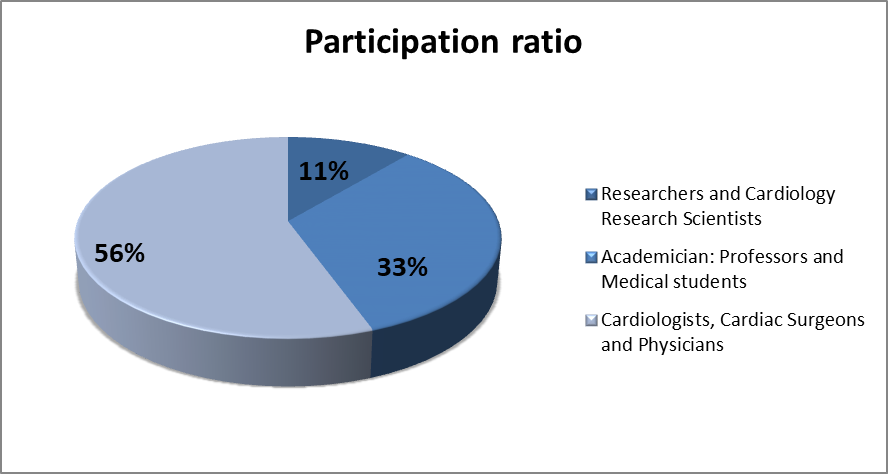
Related Conferences:
- 2nd World Heart and Brain Conference, May 30-31, 2019, Istanbul, Turkey
- 29th International Conference on Cardiology and Healthcare, June 10-11, 2019, Helsinki, Finland
- 7th International Conference on Hypertension & Healthcare, June 10-11, 2019, Helsinki, Finland
- 2nd World Heart Rhythm Conference, November 25-26, 2019 Dubai, UAE
- 30th European Heart Diseases and Heart Failure Congress, February 18-19, 2019, Amsterdam, Netherlands
- World Cardiology Experts Meeting, February 28-March 01, 2019, Osaka, Japan
- 4th Global Summit on Heart Diseases, March 15-16, 2019 Holiday Inn Atrium, Singapore, Singapore
- 5th World Heart Congress, March 27- 28, 2019, Sydney, Australia
- SCON World Congress on Cardiology and Heart Diseases, December 02-03, 2019, Las Vegas, USA
- NORDIC-BALTIC CONGRESS OF CARDIOLOGY, June 10-12 (Mon-Wed), 2019, Helsinki, Finland
Related Societies and Associations:
America
American Association for Thoracic Surgery, American Association of Cardiovascular and Pulmonary Rehabilitation, American Association of Heart Failure Nurses, American Cardiology Association, American College of Cardiology, American Heart Association, American Society for Preventive Cardiology, American Society of Echocardiography, American Society of Hypertension, American Society of Nuclear Cardiology, American Stroke Association, Argentine Society of Cardiology, Arizona Society of Echocardiography, Brazilian Society of Cardiology, Brazilian Society of Hypertension, Canadian Association of Cardiovascular Prevention and Rehabilitation, Canadian Cardiovascular Society (CCS), Congenital Cardiac Anesthesia Society, Congential Heart Surgeon's Society, Northwest Association of Cardiovascular and Pulmonary Rehabilitation, The Society for Cardiovascular Angiography and Interventions Foundation, Vascular and Endovascular Surgery Society, Canadian Association of Interventional Cardiology (CAIC), International Society of Hypertension
Europe
Association for European Paediatric and Congential Cardiology, Austrian Heart Foundation, Austrian Society of Cardiology, Belgian Society of Cardiology, British Association for Cardiovascular Prevention and Rehabilitation, British Cardiac Society, British Cardiovascular Society, British Heart Foundation, British Hypertension Society, British Junior Cardiologists Association, Croatian Cardiac Society, European Society of Cardiology, French Society of Cardiology, International Academy of Cardiology, Spanish Society of Cardiology, British Cardiology Society, Albanian Society of Cardiology, Association of Cardiologists of Bosnia & Herzegovina, Belorussian Scientific Society of Cardiologists, British Association of Nursing in Cardiovascular Care, British Congenital Cardiac Association (BCCA), British Heart Failure Society, British Nuclear Cardiology Society, Cardiology Society of Serbia, Cyprus Society of Cardiology, Czech Society of Cardiology, Danish Society of Cardiology, Estonian Society of Cardiology, Finnish Cardiac Society, German Heart Foundation, German Cardiac Society (GCS), Georgian Society of Cardiology, Hellenic Society of Cardiology, Icelandic Society of Cardiology, International Society for Vascular Surgery, Irish Cardiac Society, Kosovo Society of Cardiology, Lithuanian Society of Cardiology, Luxembourg Society of Cardiology, Macedonian FYROM Society of Cardiology, Maltese Cardiac Society, Moldavian Society of Cardiology, Montenegro Society of Cardiology, Moroccan Society of Cardiology, Norwegian Society of Cardiology, Polish Cardiac Society, Portuguese Society of Cardiology, San Marino Society of Cardiology, Slovak Society of Cardiology, Slovenian Society of Cardiology, Spanish Heart Foundation, Swedish Society of Cardiology, Swiss Society of Cardiology, World Heart Federation, The European Society Heart and Lung Transplantation, The Union of Vascular Societies of Switzerland, Swiss Society of Angiology, European Society for Vascular Surgery, Vascular Access Society (VAS), Zurich Heart House
Middle-East
Algerian Society of Hypertension, Armenian Cardiologists Association, Iranian Heart Association, Saudi Heart Association, Emirates Cardiac Society, Gulf Heart Association, Russian Cardiac Society, Russian Society of Cardiology, Ukrainian Association of Cardiology
Asia-Pacific
Asian Pacific Society of Cardiology, Asian Pacific Society of Hypertension, Asian Society for Cardiovascular and Thoracic Surgery, Asian Society of Cardiothoracic Anaesthesia, Asian Society of Cardiovascular Imaging, Association of Black Cardiologists, Association of Cardiologists of Kazakhstan, Association of Pediatric Cardiology, Association of Thoracic and Cardiovascular Surgeons of Asia (ATCA), Australian Cardiovascular Health and Rehabilitation Association, Cardiac Society of Australia & New Zealand, Cardiological Society of India, Chinese Society of Cardiology, Chinese Society of Cardiology, Indonesian Heart Association, Hong Kong College of Cardiology, Hong Kong Society of Paediatric Cardiology, Mongolian Society for Pediatric Cardiology, National Heart Association of Malaysia, Philippine Heart Association, Singapore Cardiac Society, Singapore National Heart Association, Taiwan Society of Cardiology, The Korean Society of Cardiology, The Pan-African Society of Cardiology (PASCAR), Vietnam Heart Association, World Health Organization
New Research finding which can help repair damaged heart using self-healing heart cells
Researchers have found a potential way to trigger harmed heart cells to self-heal. This has dynamic impact in treatment of heart ailments. Analysts have recognized a long non-coding ribonucleic corrosive (ncRNA) that controls qualities controlling the capacity of heart cells to experience repair or recovery. This novel RNA, which analysts have named "Singheart", may be focused on for treating heart failure within the future expectance. The revelation was made together by A*STAR's Genome Founded of Singapore (GIS) and the National College Wellbeing Framework (NUHS), and is presently distributed in Nature Communications.
Unlike newts and salamanders, humans do not have the ability to spontaneously regenerate damaged cells and tissues of organs such as the heart. However, recent research has found that mammals can have ability to regenerate the heart for a very short period of time, when they are around in the first week of their life. But this doesn’t last for long and hence the ability to regenerate is lost quickly. MacLellan said “But if we had it once, maybe it is possible to regain that ability”.
The team of researchers and scientist discovered that a unique subpopulation of damaged heart cells activates gene programmes related to heart cell division, disclosing the gene expression heterogeneity of damaged heart cells for the very first time. Additionally, they also came across the "brakes" that prevents the heart cells from further dividing and blocking its self-healing capability. Targeting these "brakes" could potentially trigger the regeneration of damaged heart cells.
This new research of repairing damaged heart using self-healing heart cells is a significant step in unlocking the heart's full potential in regeneration, and may thereby help to discover more effective treatment for heart diseases. Heart disease is the top disease burden throughout the world and strong funding remains urgently needed to enable similar pioneering discoveries as said by Prof Mark Richards, Director of CVRI.
Sports Cardiology the Advancing Subject of Concern.
The field of sports cardiology has progressive appreciably over current times. It has integrated with clinical and research progresses in cardiac imaging, electrophysiology and exercise physiology to facilitate improved diagnostic and therapeutic organization of patients. One important attempt has been towards better differentiate athletic cardiac remodelling from hereditary cardiomyopathies and other pathologies. At the same time as the diagnostic tools have enhanced, there have also been errors follow-on from assumptions that the pathological characteristics observed in the universal population would be generalizable to athletic populations.
Conversely, we know, athletes with hypertrophic cardiomyopathy, for instance, have many exceptional characteristics when compared among non-athletic patients with hypertrophic cardiomyopathy. We are learning the limitations of cross-sectional perceptions and a larger number of prospective studies have been started which ought to allow us towards more certainly examine the associations connecting exercise, cardiac remodelling and clinical results. The field enables some of the world’s specialists in sports cardiology to indicate on where there is a necessary for research focus to evolve knowledge and clinical care in sports cardiology.
Cardiology is an exclusive branch of learning in internal medicine, it uses exercise as part of both the diagnosis and treatment of disease. The result of exercise on cardiovascular function has long been a deliberation in medicine but the sub-specialty of sports cardiology speaks to a comparatively novel discipline focussing on the clinical issues relating to athletes and exercise devotees. The domineering subjects of concern have correlated to the classification of structural heart disease and the management of cardiac arrhythmias, predominantly aimed at deterrence of abrupt cardiac death and disintegration of cardiovascular function. Serious dispute has encompassed the issue of pre-participation screening of athletes and this has subjugated much of the sports cardiology agenda in the recent decade. The goal of the commentary is to mirror the current subjects of interest in sports cardiology and to identify vague issues that are likely to receive attention in the decades to come.
Be Cautious while prescribing antibiotics to hypertension patients.
Individual varieties in hereditary cosmetics and gut microscopic organisms may clarify the diverse impacts of anti-infection agents on pulse, another rodent think about proposes.
Gut microbiota- - microorganisms that populate the gastrointestinal tract- - are a blend of life forms that assume a part both in wellbeing and in the advancement of ailment or infection, including (hypertension). Similarly as people's qualities shift, every individual's gut microbiota is assorted. As anti-microbials slaughter unsafe microorganisms to fix diseases, they may likewise dispense with supportive microscopic organisms that keep up great wellbeing. Since gut microbiota are connected to a person's hypertension, University of Toledo College of Medicine and Life Sciences scientists clarified, "singular hypertensive reactions to anti-microbials may fluctuate contingent upon the host and its microbiota."
The examination group contemplated two strains of rats that have diverse gut microbiota yet both have a hereditary inclination for hypertension. Dahl salt-delicate rats ("Dahl rats") grow hypertension in light of a high-salt eating routine, while unexpectedly hypertensive rats ("SHR rats") are viewed as a creature model of hypertension disconnected to dietary salt. The scientists treated the two strains with three normal anti-microbials:
•vancomycin, which treats aggravation and contamination of the colon (colitis);
• minocycline, which treats urinary tract contaminations, skin break out and certain sorts of sexually transmitted diseases; and
• neomycin, which is utilized to avert elevated cholesterol and is a functioning fixing in many sedated creams, balms and eye drops.
Anti-microbial utilize caused distinctive reactions in the Dahl rats and SHR rats, including the manner in which that each medication influenced the rats' circulatory strain. Systolic circulatory strain - the power of blood pushing through the supply routes while the heart pulsates - expanded in Dahl rats when treated with minocycline and neomycin however not when given vancomycin. Minocycline additionally caused the diastolic pulse - the weight in the courses while the heart is very still - to ascend in the Dahl rats. SHR rats treated with any of the anti-microbials experienced either a drop in systolic pulse, or no change, similarly as with neomycin.
These discoveries propose that " the host [genetic makeup] assumes a critical part of how circulatory strain will be influenced differentially by anti-microbial treatment. This features the significance of further investigations to decide the system behind these diverse impacts," the specialists composed. "This brings up the issue of wellbeing in the use of anti-toxins by patients with such present day sicknesses [as hypertension]."
Study reveals that Cardiomyopathy mutation reduces heart's ability to vary pumping force.
Recently, the Researchers have found how a genetic mutation is associated to hypertrophic cardiomyopathy (HCM) disrupts the heart's normal function. The study reveals that the mutation prevents the heart from increasing the amount of force it produces when it needs to pump additional blood around the body.
Inherited genetic mutations can cause in the heart muscle which can abnormally thick and reduce the pumping of enough blood around the body. Studies have identified a mutation in the heart muscle protein troponin T that seem to pose a particularly high risk of sudden death in children and adults, despite it having only a mild thickening of the heart muscle wall. The mutation, known as F87L, alters a single amino acid in the central region of troponin.
Troponin complex component Troponin T which allows muscle fibers to contract in response to calcium released upon electrical stimulation. One of the significant features of cardiac muscle filaments is: they become more sensitive to calcium and hence contract more strongly, because they are stretched to longer lengths. Hence, when heart is filled with more blood, especially during carrying out physical activity, the muscle walls stretches and the heart contracts with high force to pump out extra blood. This phenomenon, which is known as the Frank-Starling mechanism is mainly due to Troponin action.
A professor along with a graduate student carried out research and introduced an equivalent mutation in the cardiac troponin T gene of guinea pigs and analyzed how it can affects the guinea pigs cardiac muscle fibers ability to contract and produce force. They found that the mutation: F87L in troponin T destroys the length-dependent increase in calcium sensitivity. the same response to calcium was observed in short, unstretched muscle fibers expressing mutant troponin T showed just as longer, stretched fibers.
The data resulted demonstrate that the length-mediated increase in force is significantly decreased by this hypertrophic cardiomyopathy (HCM)-associated mutation, which suggested that the mutation may direct muscle length-mediated increase in force production in the heart.. The effect of the Frank-Starling mechanism may have severe consequences for any individual as it decreases the heart's ability to increase output when it needs to pump additional blood around the body.
“Therepi” Can Be Used To Restore Cardiac Function
Researchers are hoping to stop the progression from heart attack to heart failure with a small device called 'Therepi.' The device contains a reservoir that attaches directly to the damaged heart tissue. There exists a refill line that connects under the patient's skin reservoir and port, where therapies can be easily injected either by the patient or a healthcare professional.
Pregnant Women's with coronary illness should conceive an offspring at no later than 40 weeks gestation period.
Pregnant women with heart disorder should give delivery at no later than 40 weeks of gestation. Beyond 40 weeks, pregnancy has no additional benefit for the baby and may even have harmful effects. Pregnancy is an unsafe period for women with heart disorder because it puts extra stress on the heart, so the guiding principle advises actuating labor or a cesarean section by 40 weeks. Heart disease is the primary reason women die during pregnancy in western nations. Compared to healthy pregnant ladies, those with heart disorder have a 100-fold more prominent jeopardy of mortality or heart failure. Generally, women with heart disease have a healthy pregnancy. Nevertheless, they have to be aware that they have a higher risk of obstetric complications as well as premature labor, pre-eclampsia, and post-partum bleeding. An evaluated 18-30% of offspring have complications and up to 4% of neoHeart disease in pregnancy is increasing as more women with congenital heart disease reach adulthood due to improved treatment and as the age at first pregnancy rises, accompanied by the higher rates of ischaemic heart disease in older, compared to younger, women. Cardiovascular risk factors including hypertension, diabetes, and overweight are also on the rise in pregnancy as older women become pregnant and women now acquire risk factors at a younger age.
The rules give proposals on in vitro preparation (IVF), contraception, and end of pregnancy in ladies with coronary illness. IVF frequently utilizes high dosages of hormones, which increment the danger of thrombosis and heart disappointment, so ladies with coronary illness require a cardiologist's affirmation that the picked strategy is sheltered. Since conveying in excess of one child puts more weight on the heart, ladies with coronary illness experiencing IVF are unequivocally encouraged to exchange a solitary incipient organism. Young ladies with intrinsic coronary illness require contraception counsel to maintain a strategic distance from spontaneous pregnancy. Some contraception strategies are contraindicated in patients with specific kinds of coronary illness.
For drugs used to treat coronary illness, the rules list data on unfriendly occasions acquired from human and creature considers. Likewise, the rules state: "On account of a crisis, medicates that are not prescribed by the pharmaceutical business amid pregnancy and breastfeeding should not be withheld from the mother. The potential danger of a medication and the conceivable advantage of the treatment must be weighed against each other."
At the point when sedate organizations have no information on whether a medication is sheltered amid pregnancy and breastfeeding, they tend to state it isn't prescribed. It might be suitable to give a medication to an extremely sick lady if there are no hurtful symptoms noted in the databases recorded in the rules.
Pregnancy isn't suggested in patients with specific sorts of coronary illness - for instance, pneumonic blood vessel hypertension, extremely expanded aorta, or seriously diminished capacity of the heart to pump blood.
Ladies with the coronary illness who need to have a child require pre-pregnancy chance evaluation and guiding. Those at direct to high danger of entanglements ought to be explored by a pregnancy heart group with a cardiologist, obstetrician, gynecologist, and anesthesiologist. A conveyance plan ought to be formulated at 20-30 weeks determining vaginal or cesarean conveyance, regardless of whether an epidural or forceps will be utilized, and the span of doctor's facility remain after conveyance.
The conveyance plan ought to be accessible 24 hours per day so when a pregnant lady with coronary illness touches base at the healing center in labor clinic staff know precisely what to do.
We trust the rules will enhance specialists' attention to the dangers of coronary illness in pregnancy yet, in addition, the restorative alternatives that are accessible to control pregnancy in these ladies.
Predictors associated with augmented Left ventricular systolic function after pulmonary valve replacement
Tetralogy of Fallot (TOF) has been more than five decades since the first total TOF repair was performed in 1955. TOF accounts for almost 10% of all cases of congenital heart disease, and is one of the mainly common cyanotic congenital heart disorders. Reparative surgery grants more than 85% of children born with TOF to continue into adulthood. Through development in surgical procedures, perioperative encourage, and imaging modalities, long-term results have also considerably progressed in the previous 2 decades, but resultant anomalies such as significant right ventricular (RV) enlargement, dyskinetic severe pulmonary regurgitation (PR), interventricular septal motion, and reduced RV systolic functioning are still there in more than half of these patients. It is now commonly acknowledged that pulmonary valve replacement (PVR) in patients with severe PR and concomitant RV volume overload can consequence in the preservation or recovery of RV function.
As such, much of the present literature on congenital heart disorder centers on preservation and recovery of RV function in patients with repaired TOF (rTOF). Although LV volume and systolic function can be fluctuate in adults at the late stage after TOF repair, PVR may have other benefits on LV systolic function. Researchers found that the only independent CMR indicator of postoperative improvement in LV systolic function is preoperative LV systolic dysfunction. This may be auxiliary to normalization of interventricular interactions after PVR, but the exact mechanisms responsible are not known yet. Other studies are needed to further analyse the findings and determine accurate predictors associated with augmented LVEF following PVR.
Battling Myocardial Infarction By Means Of Nanoparticle Tandems
How can injured cardiac tissue resultant of heart attack be treated through replacement muscle cells? An investigation team has presented an innovative method on mice: Muscle replacement cells, which are to endure the function of the damaged tissue, are loaded by means of magnetic nanoparticles. These nanoparticle-loaded cells are then infused into the injured heart muscle and held in place by a magnet, causing the cells to engraft well onto the existing tissue. By means of the animal model, the researchers show that this leads to a considerable improvement in heart function.
In a heart attack, clots more often than not lead to diligent circulatory issues in parts of the heart muscle, which results in heart muscle cells to die. Attempts have been made for some time to revitalize the injured heart tissue with replacement cells. In spite of this, most of the cells are pushed out of the deflate channel during the infusion due to the pumping action of the beating heart. Therefore, only a few spare cells remain in the heart muscle, which implies that restoration is limited.
An interdisciplinary team tested a pioneering approach on how to ensure that the infused replacement cells continue in the desired spot and engraft onto the heart tissue. The tests were performed on mice that had earlier suffered a heart attack. In order to be able to better follow the cardiac muscle replacement EGFP expressing cells from fetal mouse hearts or mouse stem cells were utilized. These fluorescent muscle cells were loaded with small magnetic nanoparticles and infused through a fine cannula into the injured heart tissue of the mice.
In the magnetic field, the nanoparticle-loaded replacement cells remain in place
In few of the rodents treated this manner, a magnet positioned at a distance of a little millimetre from the surface of the heart guaranteed that a large part of the nanoparticle-loaded replacement cells remained at the desired spot. Devoid of a magnet, about a quarter of the added cells remained in the heart tissue, but with a magnet, about 60 percent of them remained in location, throughout the project. Ten minutes in the influence of the magnetic field was previously sufficient to keep a significant proportion of nanoparticle-loaded muscle cells at the target spot. Even days after the procedure, the injected cells remained in position and slowly attached themselves to the existing tissue.
This is remarkable; exceptionally as the infarct tissue is generally undersupplied due to reduced perfusion. In the influence of the magnet, the substitute muscle cells did not die as frequently, engrafted well again and duplicated more. The analysts investigated the reasons intended for the progressed growth: It was established that these implanted heart muscle cells were filled more densely and could stay alive better credit to the more intensive cell-cell interaction. In addition, the genetic material activity of many endurance functions, such as for cellular respiration, was higher than without a magnet in these replacement cells.
The researchers also illustrated that cardiac function significantly improved in mice that were treated with nanoparticle muscle cells in combination with a magnet. Following two weeks, seven times numerous replacement muscle cells survived, and later than two months, four times as many compared to conventional implantation technology. Known the lifespan of mice of utmost of two years, this is an amazingly lasting effect.
Association between vitamin D Deficiency and risk factors in women aged 50 Or Plus
Results of studies carried out showed a strong relationship between vitamin D deficiency and metabolic syndrome in postmenopausal women. The Metabolic syndrome (MetS), a condition when there is heightened risk of heart disease, stroke, and diabetes and it is estimated to affect approximately 50% of the female population above the age of 50 developed countries.
Around 57.8% of the women having MetS were analyzed with vitamin D insufficiency (20-29 nanograms per milliliter of blood) or deficiency (less than 20 ng/ml) and about 39.8% of them with sufficient vitamin D (30 ng/ml or more).
To prove the indication whether or not the patient has MetS, typical parameters for MetS diagnosis were adopted: waist circumference above 88 cm, high blood sugar (fasting glucose above 100 mg/dL), high blood pressure (above 130/85 mmHg), and abnormal levels of triglycerides (above 150 mg/dL) and cholesterol (HDL below 50 mg/dL). if three or more of these criteria were established then the patient was considered as diagnosed with MetS.
Researches done earlier showed the existence of several mechanisms that may explain the effect of vitamin D in contribution to MetS. The best possible explanation for the association between vitamin D deficiency and its risk factors in women is that vitamin D influences insulin secretion and sensitivity, which play a major role in MetS.
Insulin-secreting pancreatic beta cells expressed the vitamin D receptor and in peripheral target tissues such as skeletal muscle and adipose tissue. Vitamin D deficiency can compromise the capacity of beta cells to convert proinsulin to insulin.
Association between Breastfeeding in reducing Hypertension risk
Women who breastfeed more children, and intended for the long period, are less likely to suffer from hypertension once they reach menopause. This is not true of obese women, however. Elevated blood pressure is the most prominent risk factor for disease and death. Proof from epidemiologic data has too revealed the advantageous effects of breastfeeding on the healthiness of infants and their mothers. It has been reported that long-term breastfeeding is linked with reduced children's allergies, celiac disease, obesity, and diabetes mellitus. Though, the effects of breastfeeding on maternal health have been not much studied compared with the effects on the children.
Numerous studies reliably found that lacking breastfeeding or early discontinuation was related with increased risks of diabetes mellitus, dyslipidemia, metabolic disorder, coronary heart disease, and cardiovascular diseases.
On the other hand few studies have recognized a clear relationship between breastfeeding and hypertension. The study population comprised 3,119 non-smoking postmenopausal women aged 50 years or older was taken under consideration. More children breastfed and the longer period of breastfeeding was associated with minor risk of hypertension in postmenopausal women, and level of obesity and insulin resistance directed the breastfeeding-hypertension correlation. In particular, the highest quintile of number of children breastfed (5 to 11) appeared a 51% lessen risk of hypertension compared by the lowest quintile (0 to 1). The highest quintile of the duration of breastfeeding (96 to 324 months) showed a 45% lower risk of hypertension.
Even though a broad variety of chronic diseases are not linked with breastfeeding, a few common mechanisms have been anticipated to lie behind the relationships between breastfeeding and these diseases. First, maternal metabolism (e.g., fat accumulation and insulin resistance) may be "reorganize" by breastfeeding subsequent to pregnancy, which diminishes the risk of obesity-related diseases. Second, oxytocin discharge stimulated by breastfeeding may be related to the decreased risk of these diseases.
Conference Highlights
- Clinical Cardiology
- Current Research in Cardiology
- Cardiac and Cardiovascular Research
- Pediatric Cardiology
- Diabetes, Obesity and Stroke
- Cardiac- Oncology
- Heart Disease and Failure
- Cardiovascular Disease and Nutrition
- Women and Heart Disease
- Heart Disease: Diagnosis and Testing
- Cardiac Surgery
- Heart Devices
- Heart Regeneration
- Cardiovascular Pharmacology
- Cardiac Nursing
- Case Reports on Cardiology
To share your views and research, please click here to register for the Conference.
To Collaborate Scientific Professionals around the World
| Conference Date | March 18-20, 2019 | ||
| Sponsors & Exhibitors |
|
||
| Speaker Opportunity Closed | Day 1 | Day 2 | |
| Poster Opportunity Closed | Click Here to View | ||













